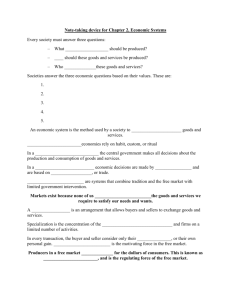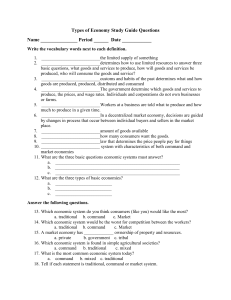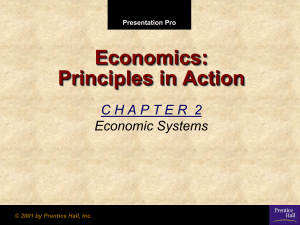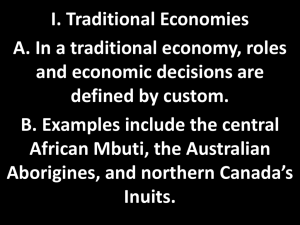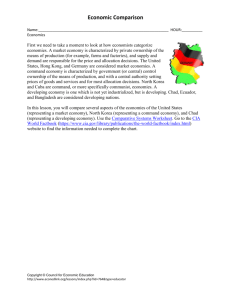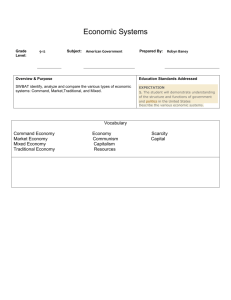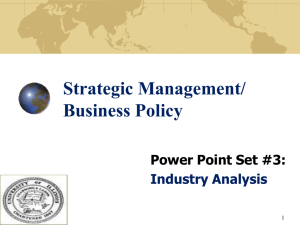Active Reading #1: cost
advertisement
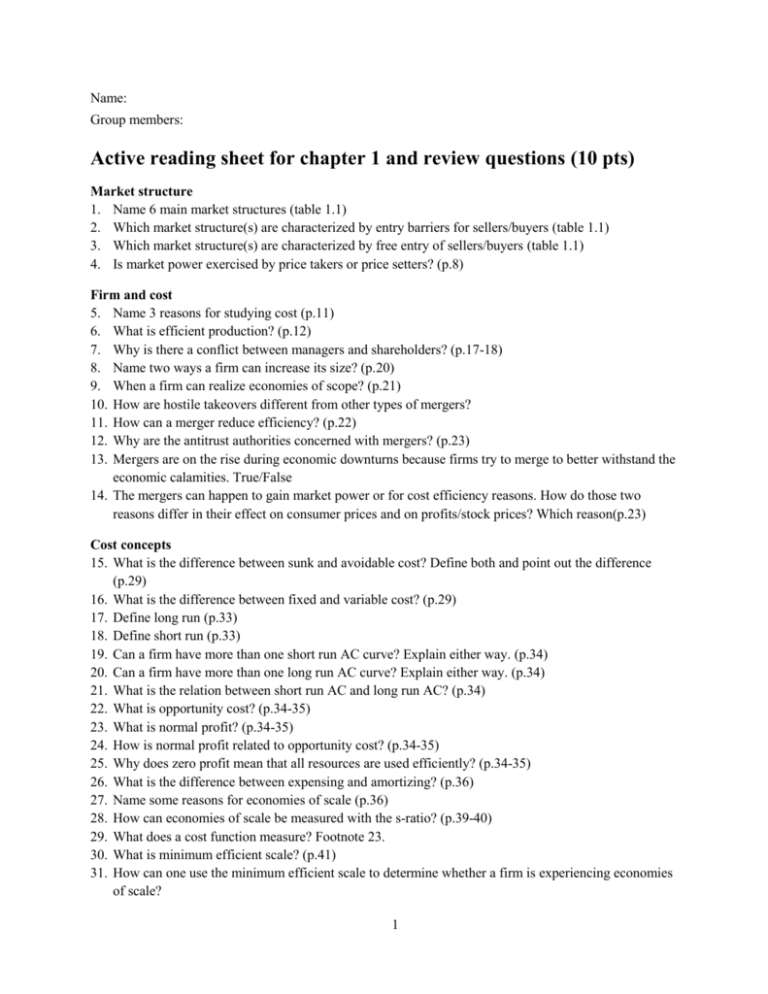
Name: Group members: Active reading sheet for chapter 1 and review questions (10 pts) Market structure 1. Name 6 main market structures (table 1.1) 2. Which market structure(s) are characterized by entry barriers for sellers/buyers (table 1.1) 3. Which market structure(s) are characterized by free entry of sellers/buyers (table 1.1) 4. Is market power exercised by price takers or price setters? (p.8) Firm and cost 5. Name 3 reasons for studying cost (p.11) 6. What is efficient production? (p.12) 7. Why is there a conflict between managers and shareholders? (p.17-18) 8. Name two ways a firm can increase its size? (p.20) 9. When a firm can realize economies of scope? (p.21) 10. How are hostile takeovers different from other types of mergers? 11. How can a merger reduce efficiency? (p.22) 12. Why are the antitrust authorities concerned with mergers? (p.23) 13. Mergers are on the rise during economic downturns because firms try to merge to better withstand the economic calamities. True/False 14. The mergers can happen to gain market power or for cost efficiency reasons. How do those two reasons differ in their effect on consumer prices and on profits/stock prices? Which reason(p.23) Cost concepts 15. What is the difference between sunk and avoidable cost? Define both and point out the difference (p.29) 16. What is the difference between fixed and variable cost? (p.29) 17. Define long run (p.33) 18. Define short run (p.33) 19. Can a firm have more than one short run AC curve? Explain either way. (p.34) 20. Can a firm have more than one long run AC curve? Explain either way. (p.34) 21. What is the relation between short run AC and long run AC? (p.34) 22. What is opportunity cost? (p.34-35) 23. What is normal profit? (p.34-35) 24. How is normal profit related to opportunity cost? (p.34-35) 25. Why does zero profit mean that all resources are used efficiently? (p.34-35) 26. What is the difference between expensing and amortizing? (p.36) 27. Name some reasons for economies of scale (p.36) 28. How can economies of scale be measured with the s-ratio? (p.39-40) 29. What does a cost function measure? Footnote 23. 30. What is minimum efficient scale? (p.41) 31. How can one use the minimum efficient scale to determine whether a firm is experiencing economies of scale? 1 32. *How economies of scale be determined from the changes in size distribution or survivorship studies? (p.42-43, tables 2.4, 2.5) 33. What is multiproduct firm? (p.44-47) 34. What is the difference between economies of scale and scope? (p.44-47) 35. Describe how economies of scope work in auto industry. (p.44-47) 36. Problems 3, 5, *7, 9 at the end of the chapter Instructions for the active reading assignment: - The sheet is due at the beginning of the class on the due date - The answers need to be typed (hand written answers will not be accepted) - The grade will be 10 for mostly completed, 5 for partially completed, and 0 for mostly not completed assignment - The answers can be very short (one word can suffice in some cases) - Keep a copy for yourself. This is crucial that you bring 2 copies. - You can work in groups of 2-3 students but submit your own answers. List the group members on top of the answer sheet 2
